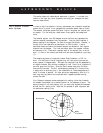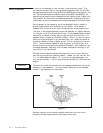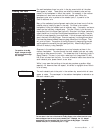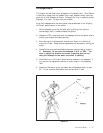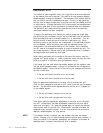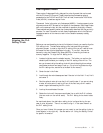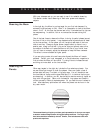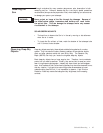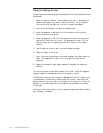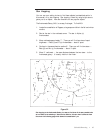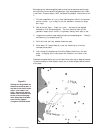
40 • Celestial Observing
CELESTIAL OBSERVING
With your telescope set up, you are ready to use it for celestial observing.
This section covers visual observing of both solar system and deep-sky
objects.
In the night sky, the Moon is a prime target for your first look because it is
extremely bright and easy to find. Often, it is a temptation to look at the Moon
when it is full. At this time, the face we see is fully illuminated and its light can
be overpowering. In addition, little or no contrast can be seen during this
phase.
One of the best times to observe the Moon is during its partial phases (around
the time of first or third quarter). Long shadows reveal a great amount of detail
on the lunar surface. At low power you will be able to see most of the lunar
disk at one time. Change to higher power (magnification) to focus in on a
smaller area. Keep in mind that if you are not using an optional motor drive,
the rotation of the Earth will cause the Moon to drift out of your field of view.
You will have to manually adjust the telescope to keep the Moon centered.
This effect is more noticeable at higher power.
If you are using a motor drive and have polar aligned, the Moon will remain
centered. Consult your local newspaper or a current astronomy magazine to
find out when the Moon will be visible. Try using filters to increase contrast
and bring out more detail on the lunar surface.
Other easy targets in the night sky include the five naked eye planets. You
can see Venus go through its lunar-like phases. Mars can reveal a host of
surface detail and one, if not both, of its polar caps. You will be able to see
the cloud belts of Jupiter and the great Red Spot (if it is visible at the time you
are observing). In addition, you will also be able to see the moons of Jupiter as
they orbit this gas giant. Saturn with its beautiful ring system and Cassini's
division are easily visible at moderate power. All you need to know is where to
look. Most astronomy publications tell where the planets can be found in the
sky each month.
Observing the Moon
Observing the
Planets
This scanned drawing of Jupiter provides a good representation of what you can expect
to see with moderate magnification during good seeing conditions. The large, bright
cloud belts should be immediately obvious. Smaller, faint belts become visible with
practice and experience.
Figure 5-1



